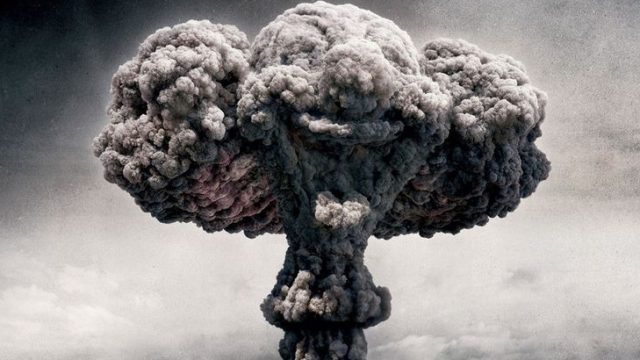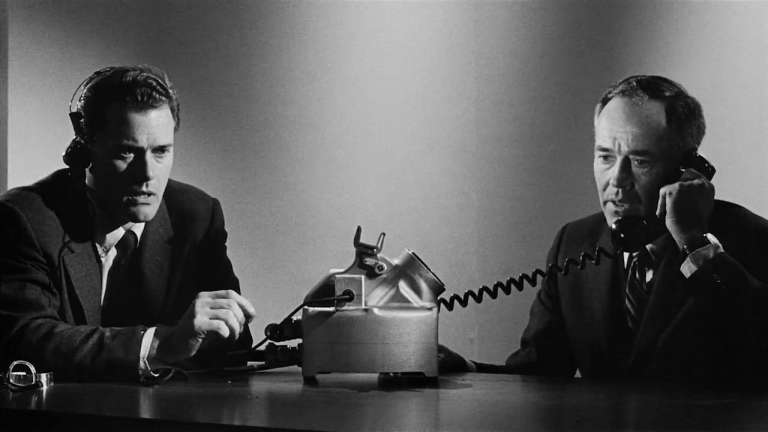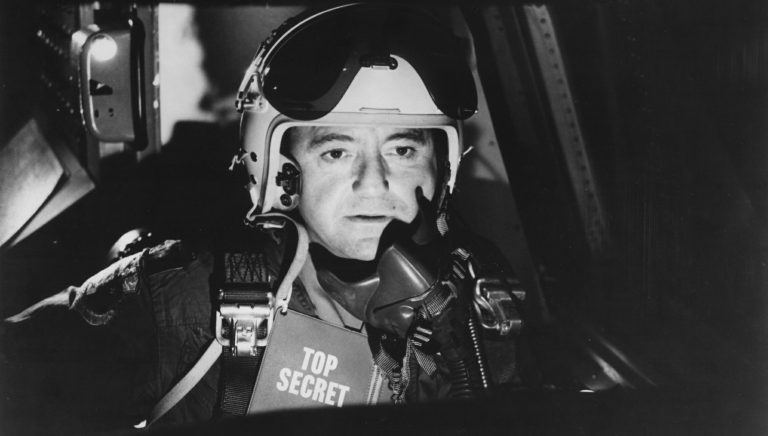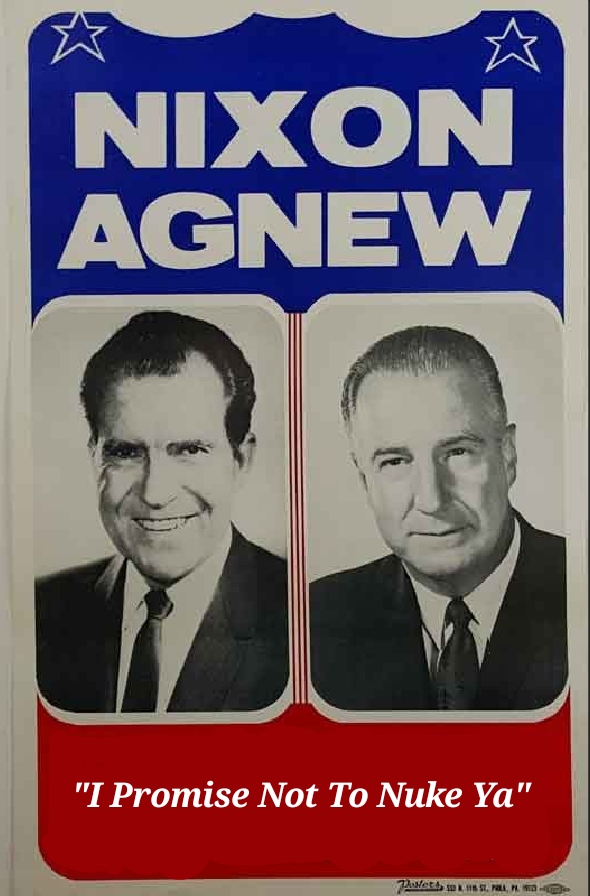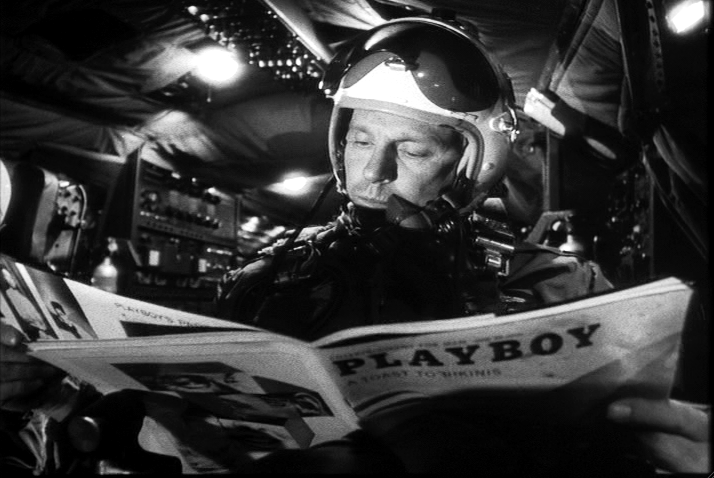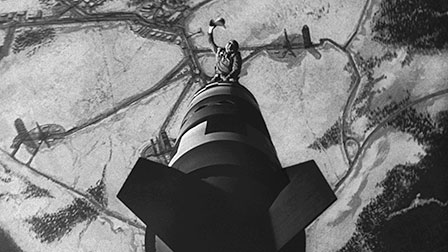In 1964, the steady march of technological advancement seemed to be leading us towards our own extinction. The industrial revolution had poisoned the air and the water. It had packed people into cities where, sprayed down with lead and mercury and cloaked in anonymity, they had turned to new, more violent forms of criminality. In 1914, the fruits of industrialization would be brought to warfare. Machine guns, artillery, aerial combat, chemical weapons, and assembly lines that could keep the bullets firing indefinitely. After 18 million died, humanity declared that this would be the last war they ever fought, but a mere two decades later we’d be at again. That war would see the invention of the atomic bomb: a single bomb that could wipe away an entire city in an instant. Never before could human beings kill so many so quickly, and the dust had hardly settled on Hiroshima before even that profound transgression seemed a quaint relic of a simpler time. By the 1960s, the US and USSR both held an arsenal capable of destroying the world several times over, with each individual warhead representing more destructive force than all the bombs exploded in World War II (including the two atomic bombs) combined.1 And in the October of 1962 the two nations were brought to the very brink of all out nuclear war. The species was granted a reprieve, but the lessons were clear. World War III was an inevitability, and it would be the end of life on this planet.
It was in this environment that the novels Red Alert and Fail-Safe were released. Essentially the same novel (Fail-Safe would be sued for copyright infringement and settle out of court) they’re procedural thrillers about the American government desperately trying to call back an inadvertent first strike. Both novels were optioned for films, handed off to two of the greatest directors of their generation, and immediately kicked off a race to the theater.
Sidney Lumet’s Fail-Safe lost that race and has the dubious distinction of being the only film that ever got beat to the theater by its own parody. It’s a shame, because Lumet delivered one of the all-time great horror movies. Fail-Safe is sparse and blunt. Filmed in black and white, the cinematography has the quality of an old newsreel, and the lack of score gives it a sort of hyper-realism. Almost like watching some historical document. This continues with the narrative, which outside of a few introductory sequences, takes place entirely in real time, its action contained to a mere three locations.
The Pentagon: all hard, angular surfaces shot from an intense perspective. It’s a crowded and uncomfortable space, the men are all buttoned up in stiff suits and uniforms, there aren’t enough chairs to go around, and there are no windows to the outside world, no natural light of any kind.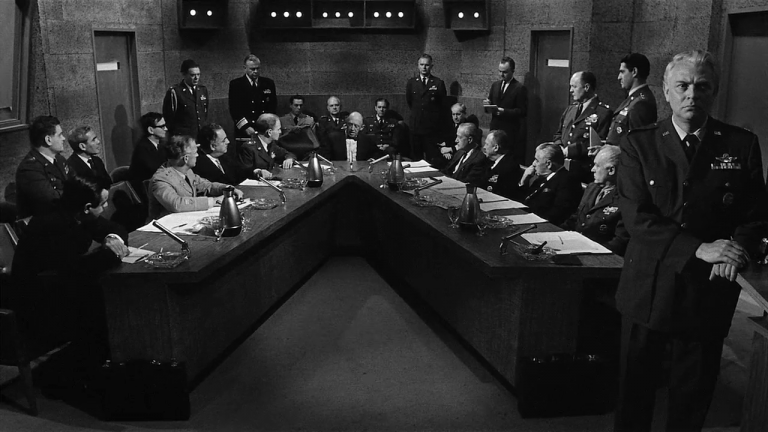
The President’s underground bunker: almost abstract in its minimalism. Two men, a table, a telephone. The plain grey walls feel like the very edge of reality.
And worst of all, the cockpit; strapped into a tight seat, boxed in by machinery, a mask clinging to your face. Lumet lets us hear the man’s breathing. Keeps his voice muffled by the mask.
The catacombs, the mausoleum, and the coffin. All three sets are underlit. You can practically smell the thick, musty air. The pacing of the film is steady, but relentless. Constantly escalating. This is not a subtle film, but it’s precise. Characters say what’s on their mind, clearly and articulately, and everyone seems to be fighting off a complete emotional breakdown. Lumet’s greatest gift may have been his ability to work with actors, and it’s amazing how in tune everyone is. The performances are all modulated as the reality of the situation slowly sinks in and extinction gradually becomes the only concern on anyone’s mind. And Lumet does an excellent job of capturing the mood as people react to a tragedy far greater than themselves. The stillness of it, the quiet camaraderie. It’s all very honest and authentic.
The plot is simple –horrifyingly so. While the US is flying a routine mission with nuclear-equipped Vindicator jets, the Soviets test an experimental radio jammer, which triggers a malfunction and a false go order. The US tries to call back the Vindicators, but can’t get through. They order other jets to pursue and shoot down the Vindicators, but fail. It’s a suicide mission with no chance of success. (Fail-Safe has a contender for the best tagline of all time: “It’ll have you sitting on the edge of eternity!” This is really becoming a lost art.)
This is a very effective bit of storytelling here. It exists to create a bit of moral scale. The decision to send these men to their deaths is a difficult one and it weighs on everyone. Fonda can hardly articulate the order, but he does it and you see both the compassion and resolve of the character. Lumet had spent years in live theater and television prior to this film, and he knew the strength of his limitations. He lets us hear the pilot’s communication over the loudspeaker in the war room, “Why, by the time we run out of gas they’ll only be a thousand miles away. Man, that’s organization for you.” And with that little snippet of dialogue Lumet has put a human being in that tiny blip on the board. We like this guy, and empathize with him, and we feel the tragedy of that little blip going dark. That’s what a single unit of death feels like, and now we can go back to discussing it in the tens of millions.
The plot continues in this fashion. The Americans follow procedure, and break procedure. They try to contact the Russians, but both sides are slow to trust each other, and valuable time slips away. Each plan is more desperate than the last and each plan fails, until we finally come to the climax. This is the sort of movie where the end is the thing. Everything in the film exists to set up this one character decision, and then the audience is left to consider and discuss it. The climax is the story and everything else is just setup. President Henry Fonda tells the Russians that if they are unable to save Moscow, he will order a nuclear strike on New York City, the only way to convince them that our attack was not intentional and to prevent a full scale nuclear exchange. Moscow is not saved, and neither is New York.2
It’s a powerful, thought-provoking ending. It’s also where the story breaks down. This is an insane thing to do, insane to even contemplate. Nuclear self flagellation. To give away five million lives3 as a show of good faith. An eye for an eye and a culture for a culture. Your mind crumbles under the weight of it all. How do you make that offer? How do you accept it? Who do you get to fly that mission? There are men who are willing to go to their certain immediate death in order to protect their nation, their family, their home. These are things a person can value more than they value themselves. But who is willing to face suicide, perhaps even damnation, in order to be the guy who murdered five million of his own people – women and children included? And what does the rest of world think when we nuke the UN? Are we going to have to nuke Cleveland to make peace with the French? I always wanted to see a sequel where Henry Fonda tries to run for reelection.
“Mr. President, why New York?!”
“Did you even try to haggle?!”
“Couldn’t you have blown up Washington? Sort of killed two birds with one stone?”
Kubrick had the right approach to this material. This is madness, and you can’t meet madness with reason. You can’t tell stories about the good, wise men who are busying themselves with the destruction of the planet. Fail-Safe is a movie that thinks very highly of humanity. Everyone is competent, compromising, dedicated to peace, and solemnly aware of the profound gravity of what they are dealing with. This, even more than the tone, is the biggest departure from Dr Strangelove. In Kubrick’s film, people are fools, and the world is run by overgrown boys motivated by little more than their own sexual inadequacy. When the nuclear attack is triggered, it is not mechanical malfunction. The order is given willingly and carried out enthusiastically.
Beyond that, the films are remarkably similar. Kubrick also limits his story to three sets, follows it in real time, and films it in black and white. Although none of it feels quite so claustrophobic.
Everything is just slightly tweaked. The cinematography is a little sharper, a little cleaner. His sets are oversized and spacious instead of being small and cramped. Instead of the verisimilitude of Fail-Safe, the effect is slightly surreal, slightly otherworldly.
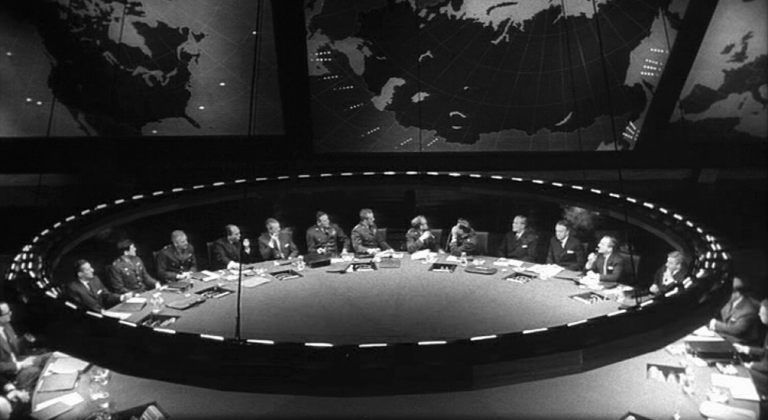
The dialogue is no more absurd, just simpler. Walter Matthau’s long speeches on acceptable levels of casualties are streamlined to General Turgidson’s4 “no more than ten to twenty million killed, tops. Uh, depending on the breaks.” President Henry Fonda’s careful politicking becomes President Merkin Muffley’s schmoozing5. Everyone barely holding it together becomes everyone completely holding it together. It’s all the same arguments, just stripped of their gravitas, dignity, and vocabulary and the results are ridiculous.
The other big departure is the ending. Kubrick isn’t interested in moral dilemmas. I imagine his stance is, “don’t blow up the world.” What’s interesting here isn’t the struggle for peace, it’s the reaction to the end. First the orgasmic glee of the blast itself.
And then, in the afterglow, quiet planning for the future. The powerful men of the world, the politicians, scientists, and military men, will retreat deep within the earth, taking with them ten beautiful women each, and busy themselves repopulating the planet. It’s an astonishingly good idea. But what if the Russians breed more prodigiously than we do? And in a hundred years when we come crawling out of the earth they wipe us out with superior numbers? An end to civilization can’t mean an end to war.
This is one more area where Kubrick and Lumet differ. Ultimately, Fail-Safe can’t imagine the end of civilization, so it has its characters do something inhuman. If man is going to grasp the power of God, then man must evolve into something that can handle that power. Kubrick, on the other hand, has always taken the long view of humanity. He has no problem imagining the end of civilization, but he can’t imagine the end of people. And wherever there are survivors there to will be pride, greed, hatred, sexism, abuse, irrationality, mindless destructive competition, and every other flaw that we’ve carried with us since the beginning of time. Everything we’ve ever done will come back to meet us again and again. I don’t where. I don’t know when. But…
1 It’s difficult to wrap your head around the scale of these weapons. “All the bombs of World War II” is the equivalent of a roughly 5 megaton explosion, although as you can imagine there are varying estimates. The Titan II warheads that made up the bulk of the US nuclear arsenal beginning in the early 60s, were 9 megaton bombs. Although they were actually replacing larger 25 megaton warheads. The Soviets detonated a 50 megaton bomb, and built a 100 megaton bomb, but decided it was too risky to ever test. At this point we’re at 25 times the total combined destructive force of World War II, and completely back in the unfathomable.
2 We’re on the line with Moscow when the bomb hits, and Lumet depicts the destruction entirely with the sound of the melting telephone. It’s another brilliant piece of minimalism, and one of the most soul-scorching pieces of sound design in film history. Once you’ve heard it, it’ll never leave you.
3 This “five million” number comes from the movie itself, so it’s what we have to go by, but it strikes me as hopelessly optimistic.
4 It is somewhat uncouth to be switching between actor names and character names this way, but how can I resist a name like General Buck Turgidson? This highlights another major difference in the approach of these films. Fail-Safe is very smart about its casting. Henry Fonda’s movie star charisma sets him aside from the rest of the cast. It feels to us like the weight of the office. Walter Matthau’s sharp sneaky wit gives way to grim resolve, and we feel the importance of that shift. Fail-Safe is a film of individuals, and the performers’ histories inform their characters and help to set the story in a real space where the specifics and peculiarities of personality impact the narrative. Dr. Strangelove, on the hand, goes to great lengths to push against it’s stars’ baggage. Peter Sellers is buried under makeup and accents, and putting him in three separate roles underlines the interchangeability of these characters. Most of the cast is made up of dramatic actors whose dramatic histories amplify the ridiculousness of their current characters, their star power helping to foreground the artificially of the film. Matthau’s Professor Groeteschele is a specific person, an obvious stand in for Herman Kahn gifted with Walter Matthau’s charm and wit, but General Jack D. Ripper is every paranoid and war hungry general who ever lived. Dr. Strangelove, the embodiment of all our moral corruption. Buck Turgidson, the entire military establishment. These characters are symbols, and it feels wrong to tie them to any one performer.
5 A common thread in both these films, as well as the similarly themed Seven Days In May (also released in ‘64), is the idea that the President’s levelheadedness and unshakable dedication to peace is the only thing keeping the military from launching into all-out nuclear war. If this was a troubling idea sixty years ago, it’s downright terrifying today.

